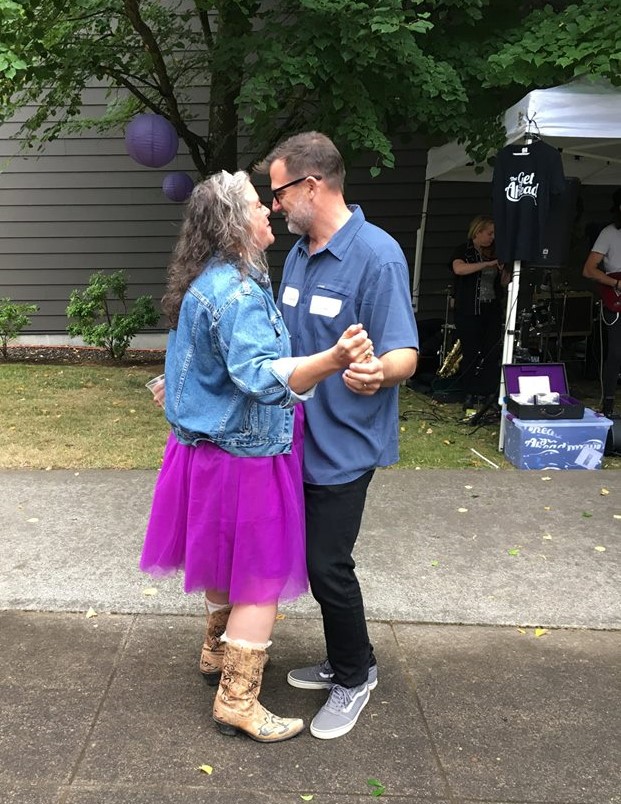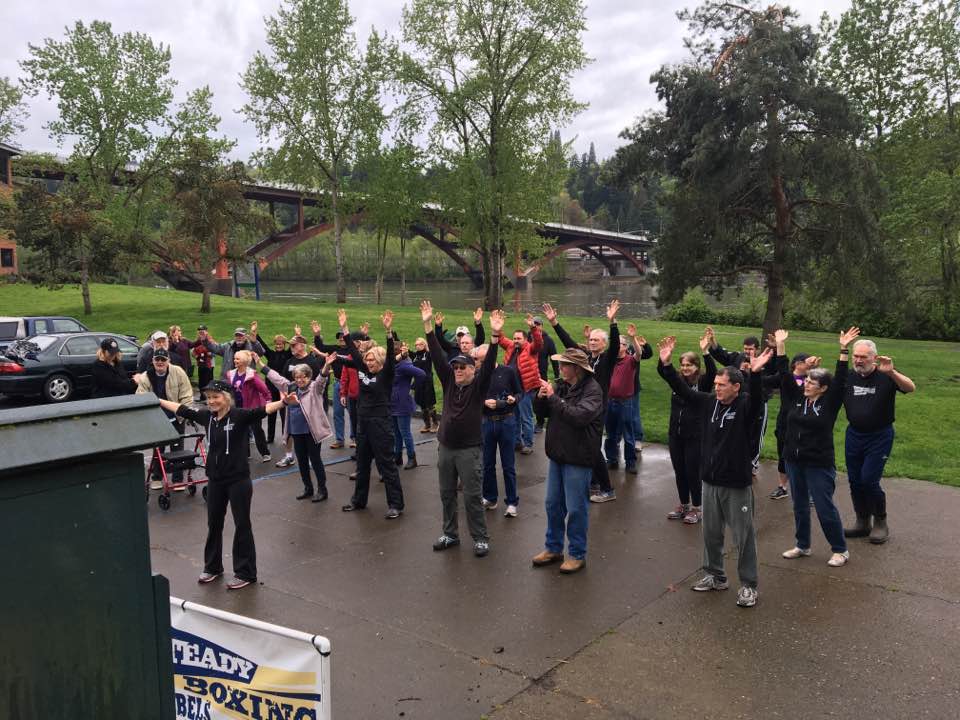
When I do a Parkinson’s assessment, I am testing the individual’s multitasking ability by asking them to follow a rhythm (metronome) in multiple ways. They do upper body, clapping, walking, marching, and I add on layers of movement. Then I ask, “Do you enjoy dancing?” So often they respond with “Yes, I did. But now I can’t.” Sometimes they say, “Now I just look dumb.”
If you know me, I am not going to let this topic rest. I have to remind them that I just saw them duel-tasking to a beat, so yes, they can still dance! They are just out of practice and lost some of their confidence.
Individuals and/or couples often don’t dance unless they are at a wedding, or in front of people without PD and are self-conscious. Well guess what? All that’s needed is a little bit of practice, just like any other skill. You can dance at home with your sweetheart (it’s fun!) or take a dance class with us!
Yet another study has been published showing that dance can reverse the signs of aging in the brain! We’ve known for years that exercise can improve age-related brain degeneration and cognitive impairment through neuroplasticity. This is especially true of dancing because it requires more than just motor skills; there is more “thinking” associated with it. Dancing is fun and great for your brain!
A study published in “Frontiers in Human Neuroscience,” compared various dancing with traditional exercise. Researchers found the brain structure in all these elderly dance subjects made dramatic improvements. Especially, in the hippocampus, the region of the brain that is crucial for creating new memories, learning and emotions.
This is such great news for those concerned about brain degeneration, such as Alzheimer’s, Parkinson’s or normal aging. Dancing is a multi-tasking activity that combines cognitive, physical and social aspects all into one. Learning dance steps, recognizing the beat, or just “feeling” the rhythm of the music and moving on your own are all sensorimotor demands.
Researchers believe learning choreography, coordinating footwork and arms, and changing tempos may account for the great improvements in balance.
The social aspect of dancing reduces feelings of isolation, which can improve depression and cognitive decline. With PD, sometimes intimacy gets lost. Ballroom dance (like tango) encourages couples to embrace each other.

At the Rebel Fit Club we will begin offering Parkinson’s Tango for Singles or Couples classes starting on Thursday, Feb 1. We have a wonderful, joyful and caring instructor, Rachel Lidskog-Lim, owner of Dance with Joy studios. She started teaching PD Tango classes in 2009.
Contact us to today to enroll in this amazing class! Email kimberly@kimberlyberg.net.
Life isn’t about waiting for the storm to pass…It’s about learning to dance in the rain.
Vivian Greene

Resources:
J Neurol Phys Ther. 2007 Dec;31(4):173-9. doi: 10.1097/NPT.0b013e31815ce78b. Effects of tango on functional mobility in Parkinson’s disease: a preliminary study.
Hackney ME1, Kantorovich S, Levin R, Earhart GM.
Blandy, L. M., Beevers, W. A., Fitzmaurice, K., and Morris, M. E. (2015). Therapeutic argentine tango dancing for people with mild Parkinson’s disease: a feasibility study. Front Neurol. 6:122. doi: 10.3389/fneur.2015.00122
BMC Neurol. 2015; 15: 226.
Published online 2015 Nov 5. doi: 10.1186/s12883-015-0484-0 Argentine tango in Parkinson disease – a systematic review and meta-analysis